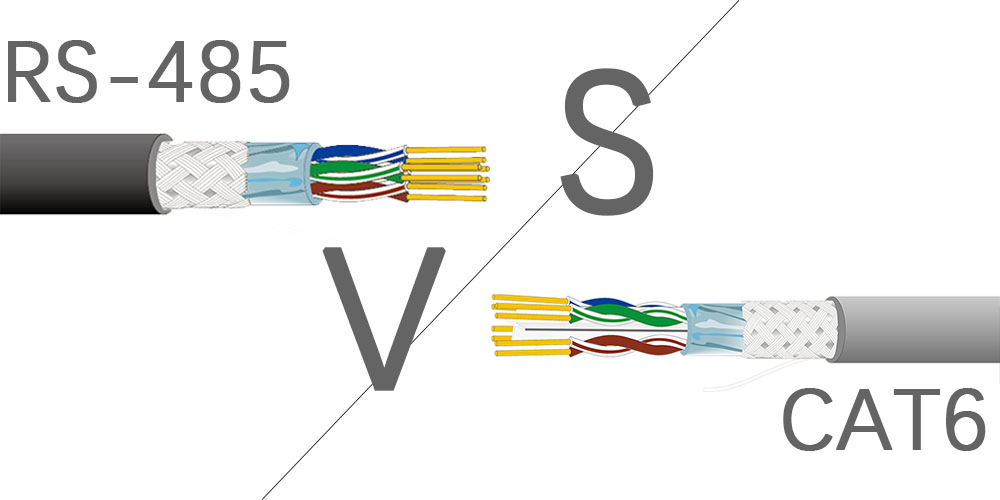When exploring the compatibility between CAT6 and RS-485 systems, it’s crucial to assess how these cables perform in facilitating efficient data transmission. Let’s delve into the comparison of RS-485 and CAT6 cables, evaluating their suitability for various applications.
Understanding RS-485 Cables vs. CAT6 Cabling
- Cable RS485: RS-485 systems commonly rely on 120-ohm cables to enhance communication stability.
- What is RS485 Cable: RS485 cables are essential for noise-immune, long-distance communication in industrial settings.
- RS485 Cabling: Proper cabling in RS-485 setups involves the strategic placement of resistors for optimal signal integrity.
- Cableado RS485: En entornos industriales, el cableado RS485 asegura una comunicación robusta y de larga distancia.
2. CAT6 Cabling
- CAT6 Cable Types: CAT6 cables, such as Type B CAT6, offer versatility and compatibility for different networking needs.
- What is CAT6A Cable Used For: CAT6A cables are known for their high-performance capabilities, ideal for demanding network environments.
- CAT6 Shielded Cable: Shielded CAT6 cables provide protection against electromagnetic interference for enhanced signal quality.
RS-485 vs. CAT6: Compatibility and Considerations
- RS-485 Communication Cable: The use of twisted pair cables in RS-485 systems ensures secure and reliable data transmission.
- RS-485 Cable Wiring: Proper wiring configurations in RS-485 setups are essential for efficient communication.
- RS-485 Twisted Pair Cable: Twisted pair cables are commonly used in RS-485 installations to minimize signal interference.
- RS-485 vs. CAT6: While CAT6 cables can be employed for RS-485 in certain scenarios, the specific requirements of the application must be considered for optimal results.
Exploring CAT6 Benefits and Applications
- Cat6 Cabling for RS485: Integrating CAT6 in RS-485 applications requires careful evaluation of noise immunity and distance considerations.
- Cat6 Shielding: Shielded CAT6 cables provide added protection against external interference, enhancing network performance.
- Cat6 Cable Voltage Rating: Understanding the voltage ratings of CAT6 cables is crucial for safe and efficient networking setups.
- Cat6A UTP vs. FTP: Comparing Unshielded Twisted Pair (UTP) and Foiled Twisted Pair (FTP) CAT6A cables helps in selecting the right option for specific requirements.
In conclusion, while CAT6 cables can be utilized in RS-485 setups under certain conditions, it’s essential to optimize the cabling infrastructure to ensure seamless communication. By understanding the distinctive characteristics of RS-485 and CAT6 cabling standards, users can make informed decisions regarding their application in diverse networking environments.
Post time: May-06-2024

